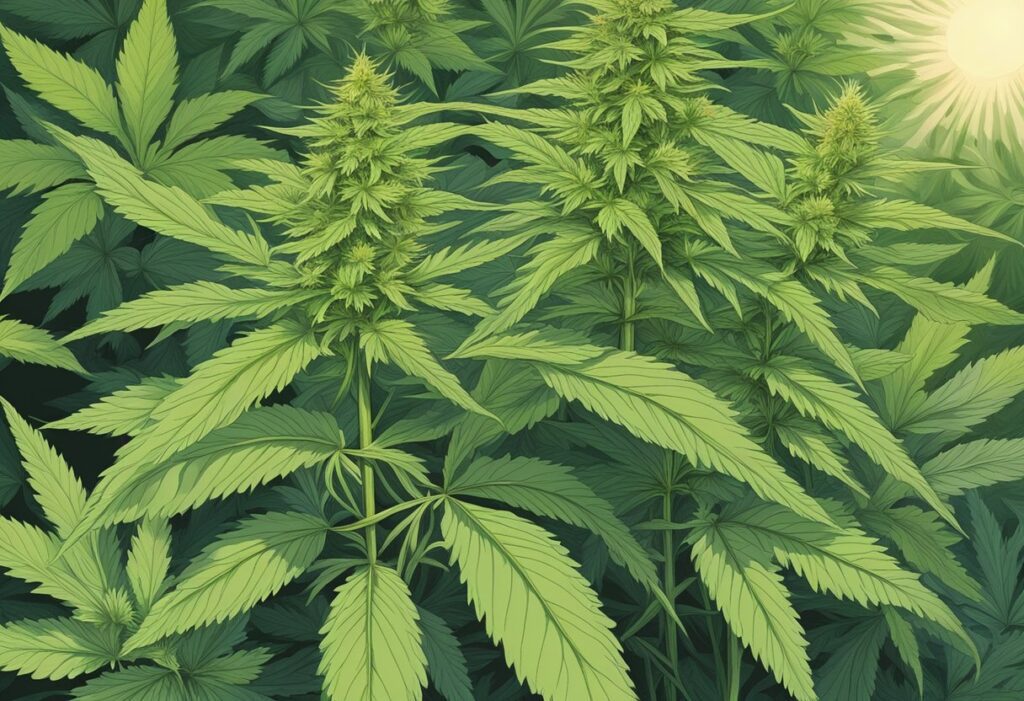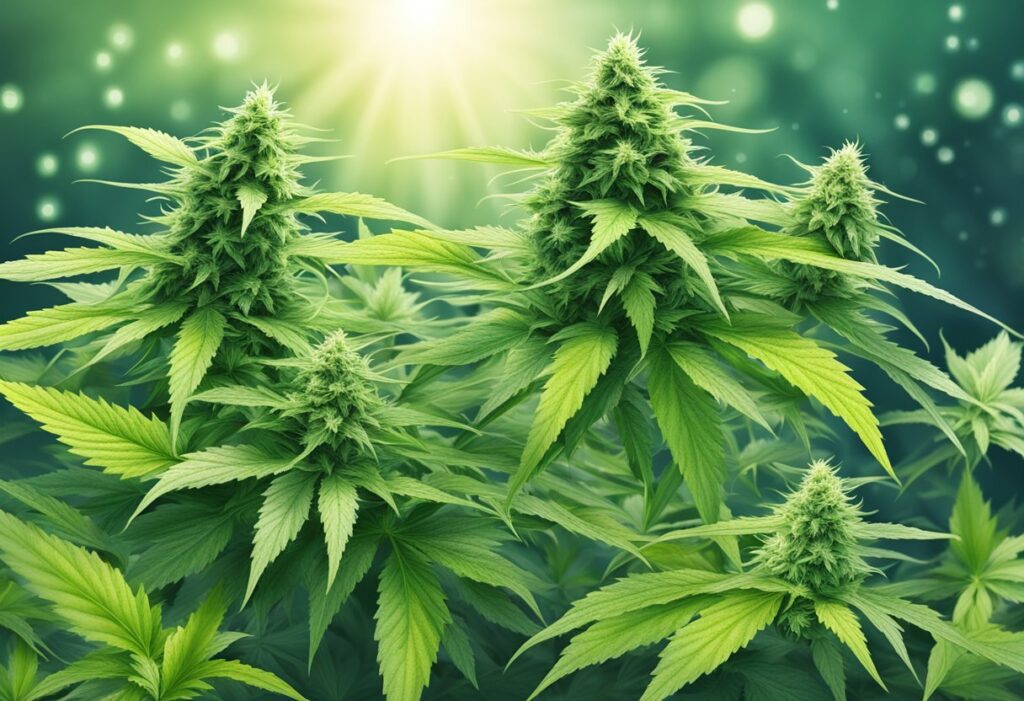
In exploring the White Widow strain, it’s essential to recognize the specifics of its cultivation, particularly when grown outdoors. Your success depends on understanding its background, adjusting to the ideal climate of Canada, and optimizing soil conditions.
White Widow is a renowned marijuana strain known for its robustness and high resin content. Originating from a cross between a South Indian indica and a Brazilian sativa, this popular hybrid offers a balanced high, with a reputation for its durability in various growing conditions, making it an excellent choice for Canadian growers like you.
Outdoor cultivation of White Widow in Canada demands a comprehension of the local climate. White Widow thrives in conditions that mirror its native environment — temperate zones with a consistent climate. Aim for an area with:
Note: In regions with shorter summers or cooler climates, consider planting in a microclimate or using a greenhouse to control conditions.
Your White Widow plants will flourish in soil that has the right structure and pH:
| Soil Type | Characteristics | Suitability for White Widow |
|---|---|---|
| Loamy | Aeration, nutrient richness, moisture retention | Highly suitable |
| Sandy | High drainage, low water retention | Suitable with amendments |
| Clayey | Poor drainage, high nutrient content | Less suitable |
| Ideal pH | 6.0 – 6.5 | Optimal Range |
Remember to measure and adjust the pH regularly to stay within the optimal range. Preparing your soil and monitoring its conditions are fundamental for a fruitful White Widow harvest.

Mastering the cultivation of White Widow outdoors in Canada requires precise techniques and diligent growth management. Your success hinges on understanding the unique needs during each stage of the plant’s life, from germination to harvest.
Proper germination is vital for a healthy White Widow crop. Begin with quality seeds and opt for a paper towel method or plant directly in soil with a pH between 6.0 and 7.0. Maintain a temperature around 22°C (72°F) to encourage germination within 3-10 days.
During the vegetative stage, focus on providing 18 hours of light. As the plant transitions to the flowering stage, which lasts about 7-9 weeks, adjust light to 12 hours to stimulate bud production. Keep the temperature between 20-30°C (68-86°F) with a humidity level around 40-50% to mimic White Widow’s preferred outdoor growing conditions.
Regularly supply your plants with nutrients high in nitrogen during vegetative growth, and switch to phosphorus and potassium during flowering. Oversee water quality and quantity carefully, measuring pH levels of water to maintain between 6.0 and 7.0 and ensure the soil isn’t waterlogged.
Inspect plants consistently for pests or signs of stress. Employ natural predators like ladybugs for pest control and introduce mild, organic pesticides if necessary. Manage stress by avoiding over-pruning and ensure proper air circulation to prevent mold and mildew.
Harvest your White Widow when 70% of the pistils have turned amber, typically by the end of October in Canada. Dry the harvested buds in a controlled environment with a temperature around 18°C (65°F) and low humidity. Finally, cure the dried buds in airtight containers, opening daily to regulate humidity and develop flavor.

To achieve the highest yield and potency when growing White Widow outdoors in Canada, your focus should be on precise control over the plant’s environment and nutrition. A meticulous approach can lead to bountiful harvests and consistently potent buds.
By adopting certain advanced techniques, you can significantly increase your White Widow yield. Here are a few specific methods:
Your end goal is not just a high yield but also superior flower quality with high THC levels. Here are key practices:
By implementing these strategies with consistency and care, your White Widow plants can produce high-quality, resinous buds with impressive potency.
Your White Widow plants, grown outdoors in Canada, can yield approximately 500-600 grams per plant. This range is under optimal conditions with the growing season typically running from April to October.
For cultivating White Widow outdoors, it’s crucial to start with disease-resistant strains suitable for the Canadian climate. Ensure robust plant training and pay close attention to moisture levels to prevent mold and pest infestations.
Genuine White Widow seeds suitable for Canadian climates are available from reputable seed banks such as Farmers Lab Seeds, known for their commitment to quality and customer satisfaction.
White Widow plants require plenty of sunlight with around 6 to 8 hours of direct sun per day. However, offer partial shading during extreme afternoon heat to prevent stress and maintain optimal photosynthesis.
Yes, White Widow Autoflowers can thrive outdoors. They generally require less maintenance but should be kept in a spot with consistent sunlight. Regular feeding and watering tailored to the autoflowering growth cycle are vital for their care.


WE ARE EVERY GROWERS ONE STOP SHOP TO ACQUIRE PREMIUM CANNABIS SEEDS FOR SALE IN THE USA, CANADA AND AUSTRALIA
Farmers Lab Seeds 2024,
All Right Reserved
Seeds are sold as novelty items, souvenirs, and collectibles. They contain 0% THC. We encourage our customers to check the legislation in their Country, State, Province, and Municipality prior to purchasing items from our store. We do not provide growing information.
All seeds are sold as hemp, and lab tested under 0.3% THC. This product is not for use by or sale to persons under the age of 21. This product should be used only as directed on the label. It should not be used if you are pregnant or nursing. Consult with a physician before use if you have a serious medical condition or use prescription medications. A Doctor’s advice should be sought before using this and any supplemental dietary product. All trademarks and copyrights are property of their respective owners and are not affiliated with nor do they endorse this product.
These statements have not been evaluated by the FDA. This product is not intended to diagnose, treat, cure or prevent any disease. Individual weight loss results will vary. By using this site, you agree to follow the Privacy Policy and all Terms & Conditions printed on this site. Void Where Prohibited by Law.